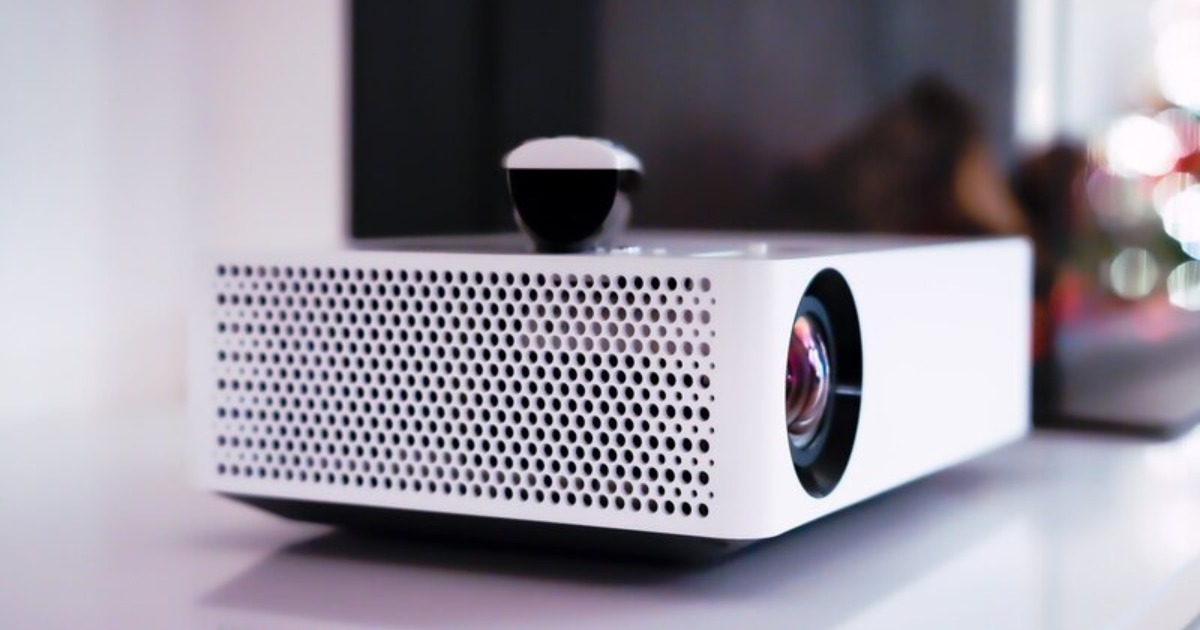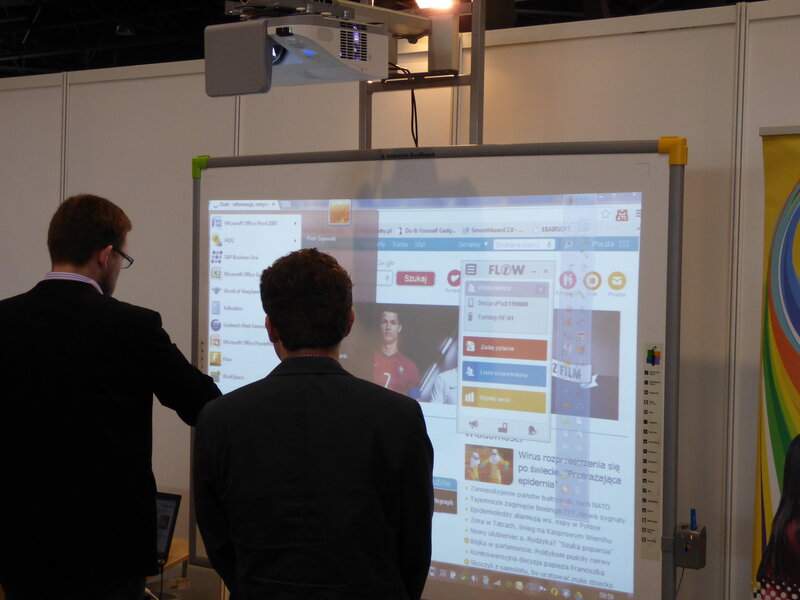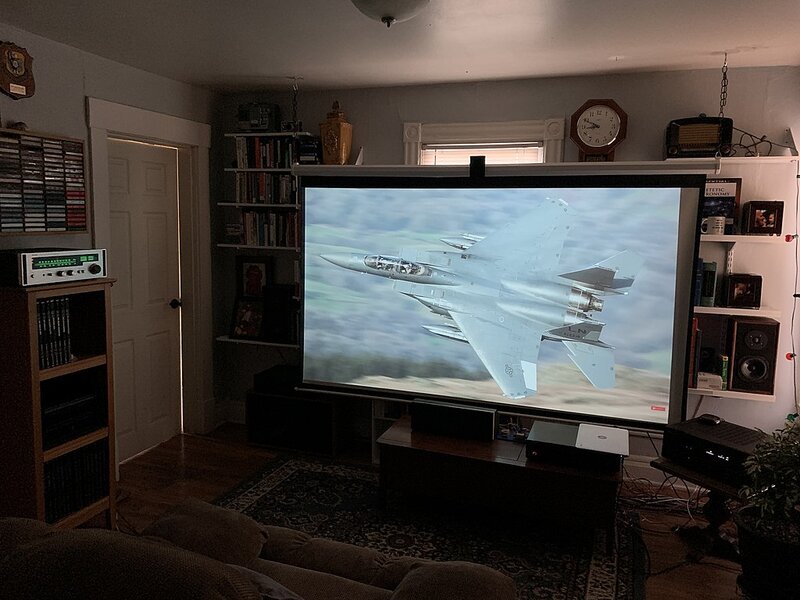How Do Short Throw Projectors Work? All Things You Need To Know
- 28 Jan 2025 15:44
- 185

Short throw projectors often stay close to the projector screens, about 3-8 ft. It's essential to learn that such a close distance can offer presenters and viewers many benefits while projecting. Still, many people often get confused between short throw projectors and long/normal ones when choosing a projector. So, how do short throw projectors work? Are short throw projectors good? This blog post will provide you with a detailed answer on the working principles of short-throw projectors and other helpful information. Scroll down for more!
How Do Short Throw Projectors Work?
Short throw projectors produce large images based on either of the two principles: a chipset with geometry correction or high-quality lens. Let's dive into them one by one!
High-Quality Lens
Short throw projectors based on high-quality lenses are preferable because of their clear and sharp images. The lenses help maintain image clarity no matter how close the projector to screen distance is. The good-quality lenses feature a focal length of 24-35mm as wide-angle concave lenses. Light beams do not go far before expanding and creating large images when passing through concave lenses. The narrower the focal length of the lenses, the larger the angle that the beams can go. The location of these projectors helps determine how the image is displayed on the projector screen, so positioning should be exact. Still, this kind of short-throw projector remains a drawback. Their lenses might not always enable zooming or adjusting.
Chipset With Geometry Correction
The chipset principle is more complicated than high-quality lenses. With this principle, the image will pass through the chip before producing via the lenses. The chipset will bend the images thanks to geometry correction, adding the digital filter to video signals when traveling to the projector. As a result, this method can reduce damage to the final images. Short throw projectors are more costly than others, but the long-term advantages will indeed surpass investment.
Differences Between A Short Throw And A Normal Throw Projector?

You should now wonder about the differences between short-throw and regular throw projectors. How far can a short-throw projector work compare to the regular one? You can set up a short-throw projector much closer to the projector screen than a regular throw projector without too many technical skills. A short-throw projector might deliver a 100′′ image at 5 ft from the screen, depending on the throw ratio. The throw ratio can indicate whether the projector has a long, standard, or short throw. Compared to a short-throw projector, a long and normal throw one may need to stay 10-15 ft farther from the screen to generate the same sized image.
What Are The Advantages Of A Short Throw Projector?
This section will walk you through three considerable advantages of short-throw projectors. Let's see what they can offer you.
Shorter Cable Length
Imagine that your projector is at the far end of the room, about 15 ft from the screen. In this situation, you'll undoubtedly need a 20-foot HDMI cable to connect it to your A/V receiver. You'll also have to figure out how to power the projector at such a distance. And what if the receiver is beneath the screen in an entertainment place? You may need even more, depending on how the cable works. Still, if you opt for a short-throw projector, your cable lengths will be substantially shorter as the projector is only 4 to 5 feet from the screen! You can connect the power cable with a short HDMI cable and a small extension to the receiver. This method will save you your time and reduce trouble when you first run the cables, especially if the power or HDMI cable fails for whatever reason.
Positioning and the Issue of Shadows
If placed near the end of the room, projectors with a standard throw will have more space to modify for screen placement. With a short-throw projector, there is considerably less room for error. You will also need to calculate very carefully when you set it up. When a regular throw projector stays near the end of a room, a large shadow will appear on the screen anytime someone moves in front of the seating areas. This issue can make viewers feel annoyed over time. Suppose you're enjoying a big game, and you don't see your team score the game's winning goal, touchdown, etc. You can get angry with that person!
Heat/Sound Disturbance from the Projector
You may be unaware that projectors become exceedingly hot when used for a long time. It's because they generate a significant quantity of heat. A standard throw projector stays closer to the seating areas, such as on the wall behind you, directly above you, or on something adjacent to you. You will feel the heat after being close to it for a time. In addition, most projectors contain an internal fan (or more) to keep them cool. The fans will usually spin faster and adjust to the heat depending on how hot they get. The fans on a low-end projector can reach a high volume level and cause a distraction. When it comes to a short-throw projector, you will be less likely to feel the heat and hear the projector's fan(s) as it stays farther from your seat. Furthermore, because the front speakers focus sounds toward you, you will almost certainly not hear the fans roaring during the movie. You can always create a hush/cooling box for the projector if it still makes a lot of noise!
What Are The Uses Of A Short Throw Projector?

It's not surprising that short-throw projectors are more and more popular over the last decades. Space is always a big constraint in areas like classrooms, offices, and apartments. As a result, people working or living in such places will choose short-throw projectors rather than long or standard throw ones. For example, they help the teachers deliver large-sized images to the students. This way, the teachers can stand anywhere to address the class without causing shadows to be cast on the projector screen. Not only professionals and educational institutions but also ordinary people use short-throw projectors for their entertainment needs. They've become popular in small home theaters.
What To Consider When Buying A Throw Projectors?
Below are some tips on choosing a short-throw projector:
- The big screen size provided is one of the most appealing features that a short-throw projector can offer. Screen sizes of 120 or 100 inches are standard, with higher screen sizes providing a more immersive experience.
- When choosing a short-throw projector, it should be able to fit into a tiny space. So, it's critical to examine your projector's throw distance. You can consider a throw distance of 3 to 4 feet, which is pretty manageable.
- In addition to having a huge screen, it’s crucial to have a clean and sharp image. You should check your projector's screen resolution, as a 4K UHD projector provides far better image quality than an FHD projector.
Conclusion
This article has outlined two working principles of short-throw projectors and other relevant facts. With such long-term benefits, they are worth investing in and promise to offer you the best experience when enjoying the high-quality images from the screen. If you have any other questions about this topic, don't hesitate to comment below. Display Central is always willing to support you. Thanks for reading!
